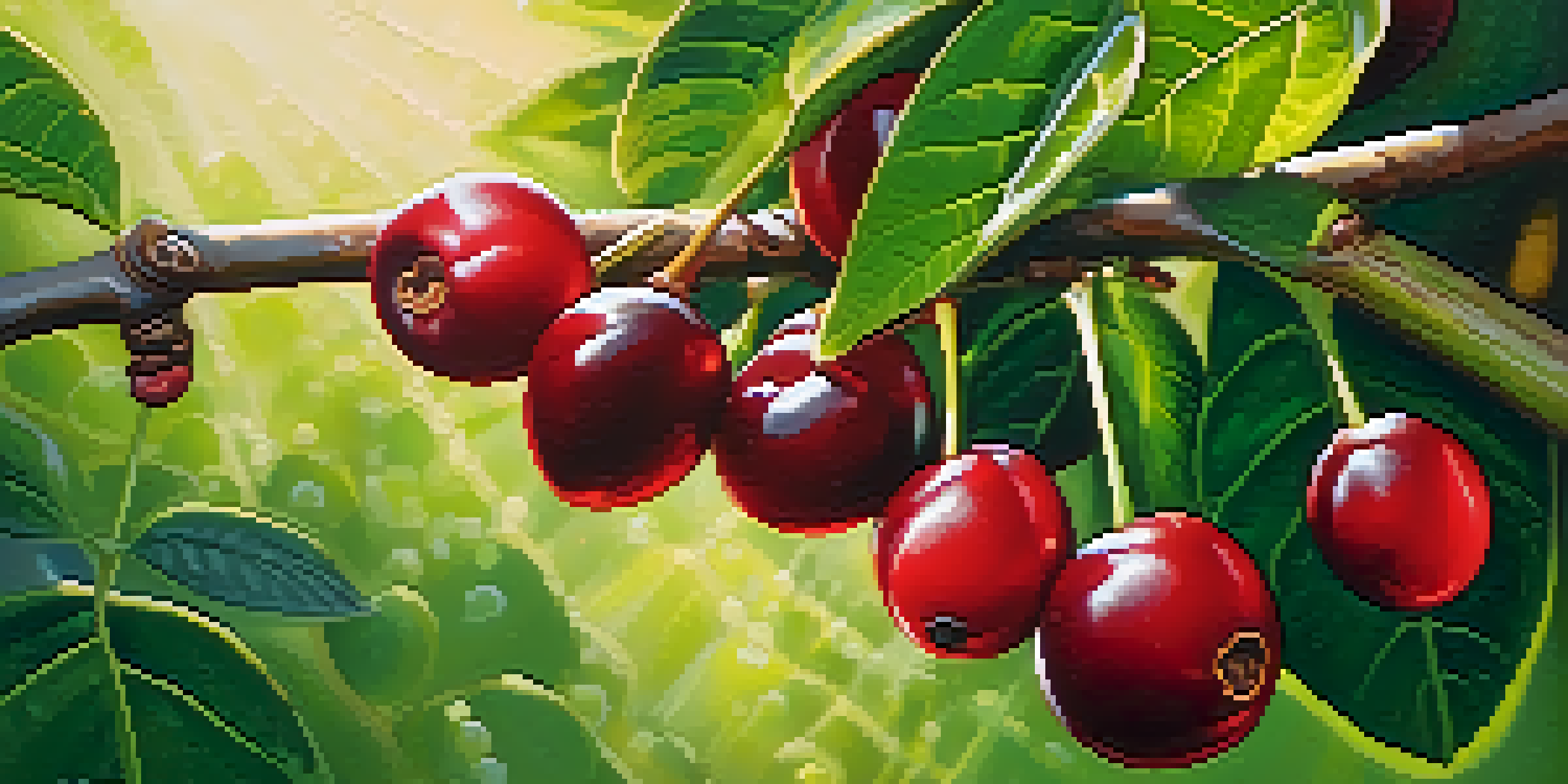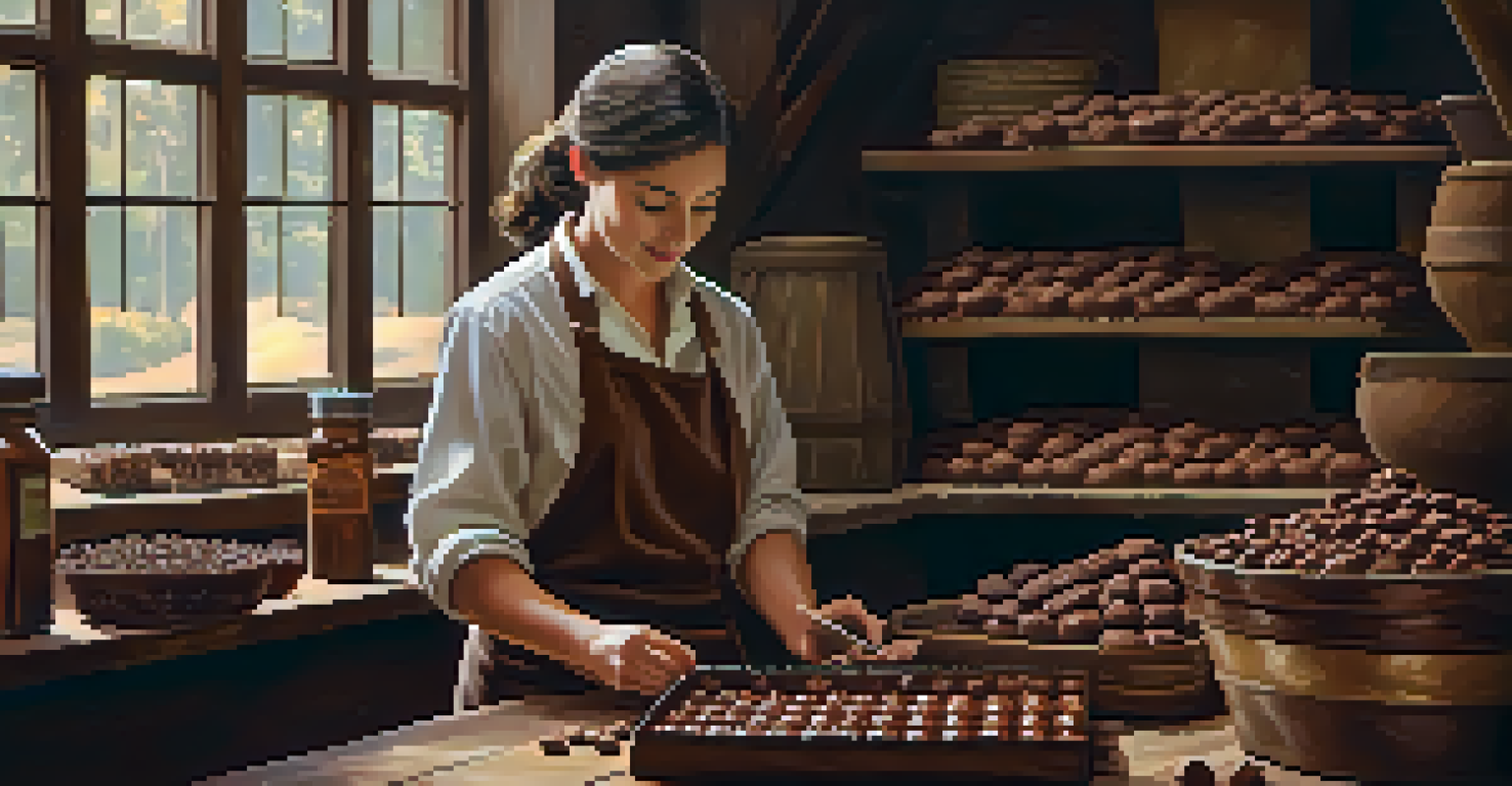Peru's Coffee and Chocolate: A Taste of Local Delights

The Rich History of Coffee Cultivation in Peru
Peru's coffee-growing tradition dates back to the 18th century, when European settlers introduced coffee plants to the region. Today, Peru is known for its high-quality arabica beans, which thrive in the country's diverse microclimates. The unique altitude and rich soil contribute to the distinct flavors found in Peruvian coffee, making it a favorite among coffee aficionados.
Coffee is a language in itself.
Small-scale farmers play a crucial role in this industry, with many practicing organic farming methods that emphasize sustainability. These farmers often belong to cooperatives, which help them access better markets and fair prices for their products. The commitment to quality and ethical practices has put Peruvian coffee on the global map as a premium product.
Related Resource
As you sip a cup of Peruvian coffee, you're not just enjoying a beverage; you're partaking in a rich tapestry of culture and tradition. Each cup tells the story of the land, the farmers, and their dedication to creating something truly special.
The Art of Crafting Chocolate in Peru
Peru's chocolate-making heritage is just as rich and flavorful as its coffee. The country is home to some of the finest cacao beans in the world, particularly the rare Criollo variety, which is celebrated for its complex flavor profile. This cacao is often grown in the same regions as coffee, benefiting from the same ideal growing conditions.

Local artisans and chocolatiers are dedicated to preserving traditional methods of chocolate production, from fermentation to roasting. They often use minimal processing to highlight the natural flavors of the cacao, resulting in chocolate that is both rich and nuanced. This craftsmanship is evident in the wide array of chocolate products available, from dark bars to unique flavored truffles.
Peru's Rich Coffee History
Peru has a long-standing coffee-growing tradition that emphasizes high-quality arabica beans cultivated by small-scale farmers using sustainable practices.
When tasting Peruvian chocolate, you're not just indulging your sweet tooth; you're experiencing a rich cultural legacy. Each bite reflects the effort of local farmers and artisans who are passionate about sharing their craft with the world.
Culinary Pairings: Coffee and Chocolate Together
One of the delightful aspects of Peru's coffee and chocolate is how well they complement each other. Imagine enjoying a smooth cup of coffee alongside a piece of rich chocolate; the flavors dance together, enhancing your sensory experience. This pairing is a testament to the depth and complexity of both products.
Chocolate is happiness that you can eat.
Many local cafes and restaurants in Peru offer curated tasting experiences, where you can sample various combinations of coffee and chocolate. These pairings often highlight the unique tasting notes of each, showcasing how the bitterness of coffee can elevate the sweetness of chocolate. It's not just about satisfying cravings; it's about exploring the harmony of flavors.
Related Resource
Whether you're a coffee lover or a chocolate enthusiast, indulging in these pairings gives you a deeper appreciation for Peru's culinary scene. It's an invitation to savor the moment and celebrate the artistry behind these local delights.
The Role of Sustainable Practices in Production
Sustainability is at the heart of Peru's coffee and chocolate industries. Many farmers are committed to organic farming, which not only protects the environment but also enhances the quality of their products. By avoiding harmful chemicals, they ensure that their coffee and cacao retain their natural flavors and benefits.
This sustainable approach also fosters a healthier ecosystem, supporting biodiversity and soil health. Many farmers incorporate agroforestry practices, planting shade trees that provide habitat for wildlife and protect crops from extreme weather. This balance between agriculture and nature is crucial for the long-term viability of coffee and chocolate production in Peru.
Chocolate Craftsmanship in Peru
Peru is renowned for its fine cacao, particularly the rare Criollo variety, with local artisans dedicated to preserving traditional chocolate-making methods.
As consumers, we can support these sustainable practices by choosing products that are certified organic or fair trade. By doing so, we contribute to the well-being of farmers and the preservation of Peru's rich agricultural heritage.
Exploring Regional Varieties of Coffee and Chocolate
Peru's diverse geography gives rise to a variety of coffee and chocolate profiles, each with its own unique characteristics. From the high-altitude regions of Cajamarca to the lush valleys of Cusco, each area produces beans with distinct flavor notes. This regional diversity makes exploring Peruvian coffee and chocolate a fascinating journey.
For instance, coffee from the northern regions is often fruity and sweet, while southern coffees can have a more robust and earthy flavor. Similarly, chocolates made from cacao grown in different regions can vary in bitterness and sweetness, offering a wide range of tasting experiences. Tasting these regional varieties is like traveling across Peru without leaving your seat.
Related Resource
As you sample different varieties, you'll discover the rich tapestry of flavors that reflect the land and its people. This exploration not only delights the palate but also deepens your understanding of Peru's agricultural heritage.
Visiting Coffee and Chocolate Farms in Peru
For those eager to experience Peru's coffee and chocolate culture firsthand, visiting local farms is an unforgettable adventure. Many farms offer tours that allow visitors to see the entire production process, from plant to cup. You can witness how coffee cherries are harvested and learn about the steps involved in transforming cacao beans into chocolate.
These tours often include tastings, where you can savor fresh coffee and artisanal chocolate while chatting with passionate farmers. It's an opportunity to connect with the people behind the products and gain insight into their dedication and craftsmanship. This immersive experience deepens your appreciation for the flavors you enjoy.
Sustainable Practices Matter
Sustainability is central to Peru's coffee and chocolate industries, with many farmers committed to organic methods that enhance product quality and protect the environment.
Whether you're a seasoned coffee connoisseur or a casual chocolate lover, visiting these farms offers a unique perspective on Peruvian culture. It's a chance to create lasting memories while supporting local communities and sustainable practices.
Bringing the Flavors of Peru Home
After experiencing the rich flavors of Peru's coffee and chocolate, you may want to bring a piece of that culture home with you. Many local markets and shops offer a variety of coffee beans and chocolate bars, allowing you to recreate the experience in your own kitchen. Look for products that highlight the region and farming practices for an authentic taste.
When brewing your coffee or melting your chocolate, consider experimenting with different recipes that showcase their flavors. Whether it's a classic mocha or a chocolate-infused dessert, these ingredients can elevate your culinary creations. Sharing these treats with friends and family is a wonderful way to introduce them to the delights of Peru.

By bringing home Peruvian coffee and chocolate, you're not just taking a taste of the country; you're sharing its story and supporting its farmers. Each sip and bite becomes a reminder of the vibrant culture and traditions that make Peru's coffee and chocolate truly special.